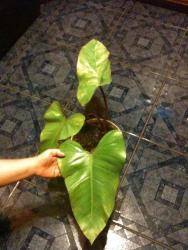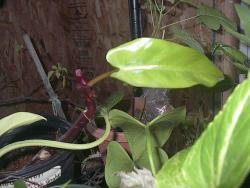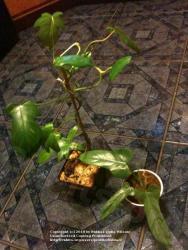Horse head is a common name for Philodendron bipennifolium. My guess is both are the same plant.
If you look at the photos on this page you'll see this plant goes through a wide range of changes as it grows in exact the same way a baby changes as it morphs into a three year old, then a six year old before becoming a teen ager, a young adult and finally into a 69 year old like me. These changes are called ontogeny. To make that more complicated plants go through a process of natural variation and the two combined make it tough on anyone to walk through a rain forest and figure out which species is really a different plant.
When a person goes into the forest to collect they always look for the most beautiful "forms". There may be two identical species growing side by side but they have different forms so the collector takes the one that is more striking, still they are the same species.
We change so so much as we grow even some of our best child hood friends have no idea who we are when we meet 50 years later. Plants are exactly the same.
There is one photo on the page showing a bunch of different forms on the same plant.:
http://www.exoticrainforest.co...
Once you read this page then click on the link to Natural Variation. I think you'll get the picture. By the way, this subject confuses many people because we have a tough time understanding that plants morph as they age just like people.
Let me know what you think.
Steve


